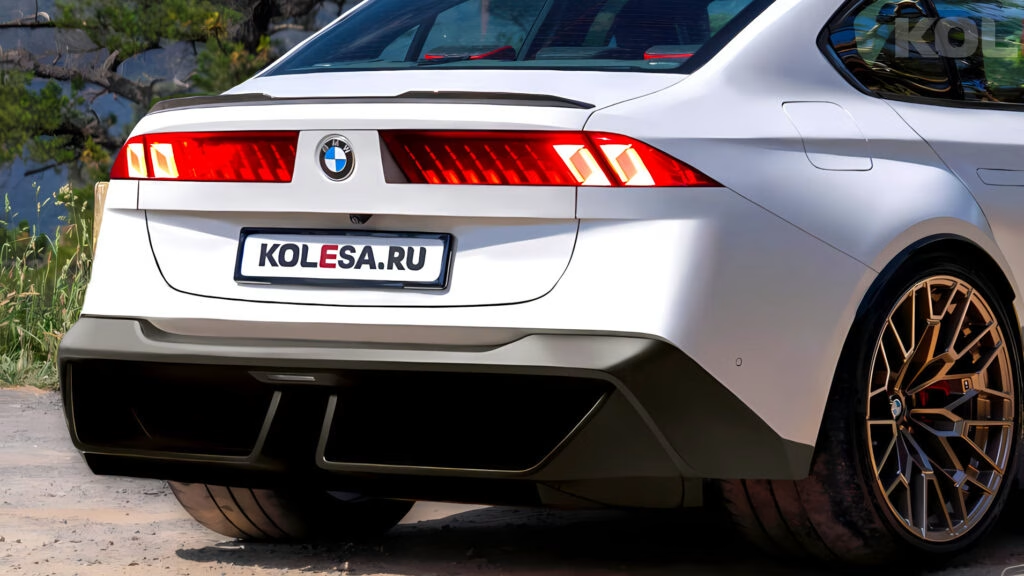How Is BMW’s Electric M3 Changing the Game for Performance Sedans?
BMW’s M division is about to flip the script on what it means to drive a high-performance sedan. The upcoming electric M3—likely to be called the iM3—signals a bold new direction, blending the brand’s motorsport DNA with cutting-edge EV tech. If you’re wondering whether the thrill of an M3 can survive the leap to electric, you’re not alone. Let’s break down what’s coming, why it matters, and what it means for both die-hard enthusiasts and newcomers to the brand.
What’s Different About the Neue Klasse Design?
BMW’s Neue Klasse platform is more than just a new chassis—it’s a design revolution. Early prototype sightings and renderings point to a dramatic shift away from the controversial oversized kidney grilles of recent M3s. Instead, expect slimmer, illuminated grilles that integrate seamlessly with sharp, modern headlights. The look is cleaner, more purposeful, and, frankly, a breath of fresh air for those who’ve been craving a return to understated aggression.
The side profile borrows cues from the latest 5-Series, with flush door handles and simpler, more elegant lines. Around back, the taillights are expected to echo the Vision Neue Klasse concept, but with a sleeker, more compact execution. A sculpted rear bumper and pronounced diffuser round out a package that feels both futuristic and unmistakably M.
How Much Power Are We Really Talking About?
Here’s where things get spicy. While official specs are still under wraps, credible leaks and industry chatter suggest the electric M3 will pack four electric motors—one at each wheel. Theoretical output could hit a mind-bending 1,341 horsepower (that’s a full megawatt), but BMW is expected to dial it back to a more “sensible” 700 to 800 horsepower for production. Even at the lower end, that’s a huge leap over the current M3 Competition’s 503 horsepower.
What does this mean for real-world performance? Expect acceleration that borders on supercar territory, with instant torque and all-wheel-drive traction. BMW’s engineers are reportedly obsessed with making sure the iM3 isn’t just fast in a straight line, but also delivers the kind of nuanced handling and feedback that M cars are famous for. Think less “electric appliance,” more “precision tool.”
Will the Electric M3 Replace the Classic Inline-Six?
Not just yet. BMW has confirmed that the beloved inline-six M3 will continue alongside the new electric version, at least for the foreseeable future. This dual-track approach is smart: it gives traditionalists a reason to stick around while inviting a new wave of buyers who want the latest in EV performance. It’s a bit like having your cake and eating it too.
How Will the Driving Experience Compare to Gas-Powered M3s?
This is the million-dollar question. Purists worry that electric cars can’t match the visceral connection of a high-revving engine, manual gearbox, and rear-wheel-drive chassis. But BMW’s M division isn’t treating this as just another EV. The aim is to deliver a driving experience that’s every bit as engaging—just different.
With four motors, the iM3 will be able to do things no gas-powered M3 ever could. Imagine torque vectoring so precise it feels like the car is reading your mind, or acceleration out of corners that redefines “effortless.” Sure, you’ll lose the soundtrack of the inline-six, but you’ll gain a new kind of immediacy and control. Early prototypes have reportedly left test drivers grinning, not longing for the past.
What About Weight and Range—Are There Trade-Offs?
Let’s be real: batteries are heavy. The electric M3 will likely tip the scales as the heaviest M3 yet. But BMW is betting that the extra power and advanced chassis tech will more than make up for the added mass. The company’s recent EVs, like the i4 M50, have shown that weight doesn’t have to kill agility if the suspension and electronics are dialed in.
As for range, expect something competitive with other high-performance EVs—likely in the 250-300 mile ballpark, depending on how hard you drive. Fast-charging capability will be a must, and BMW’s new battery tech promises quicker top-ups and better thermal management than previous generations.
How Does the Electric M3 Stack Up Against Rivals?
BMW isn’t entering an empty field. The Porsche Taycan, Audi RS e-tron GT, and even Tesla’s Model S Plaid have set the bar high for electric performance sedans. But the M3’s legacy—and BMW’s focus on driver engagement—could give it an edge. If the iM3 delivers on its promise of combining M-car dynamics with EV power, it could become the new benchmark for the segment.
What’s the Real-World Impact for Enthusiasts and Everyday Drivers?
For enthusiasts, the electric M3 is a chance to experience the next evolution of performance without sacrificing the things that make driving fun. For everyday drivers, it means access to a car that’s as comfortable on the commute as it is on a back road. And for BMW, it’s a statement: the future of driving excitement doesn’t have to be noisy or polluting.
The big takeaway? The electric M3 isn’t about perfection—it’s about smarter adjustments. Start with one change this week—maybe reading up on EV ownership or taking a test drive—and you’ll likely spot the difference by month’s end. The future of performance is coming, and it’s a lot more thrilling (and approachable) than you might think.

